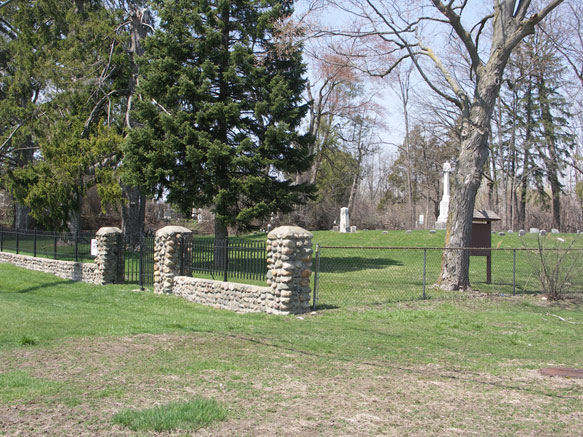
Alexander Macomb Chapter, NSDAR
Cannon Burial Ground
26 Mile Road, Washington Twp., Michigan
Promoting Historic Preservation
Cannon Burial Ground was bequeathed as an endowment to the Alexander Macomb Chapter, NSDAR. The chapter provides, in perpetuity, the supervision, maintenance, proper use, and care for the cemetery.
On August 23, 1872, the Cannon Cemetery Foundation was established by four sons and three grandsons of Pearl and Mary (Fuller) Cannon. Their purpose: “Having a proper regard for the care of the grounds containing the last resting place of our dead, and cherishing with tender solicitude their memory deeming it highly proper that our family and descendants, so far as practical should bury on common ground, we form ourselves an Association.”
Cannon Cemetery is also the final resting place of several Civil War soldiers, a member of the Grand Army of the Republic, a member of the Michigan State House of Representatives, two postmasters, and a pioneer surveyor who plotted numerous portions of Michigan in both peninsulas.
In the mid-1870s, a Detroit, Michigan, architect was consulted as to the design of the cemetery. The suggestion was made for a family circle arrangement, similar to the one used in Gettysburg National Cemetery. At the center of the cemetery is a monument of octagonal shape, which was designed by W.C. Dwinelle of Barbour and Moore of Pontiac, Michigan. At the time, the monument was considered the finest monument ever made in the state, and is representative of the memorial at Bunker Hill. There is also a memorial erected by the National Society Daughters of the American Revolution located between the plots of Pearl and Mary (Fuller) Cannon.
Of interest: Irving D. Cannon, son of Stephen Benjamin Cannon and Sarah Tweddill, actually lived in the Cannon Burial Grounds during the warmer months. Irving served as its Superintendent of Grounds as well as the caretaker of the cemetery from 1938 until his death in 1953.
Currently, anyone who can establish and prove a lineal, bloodline descent from any individual buried within the cemetery can request burial in any of the available areas.
